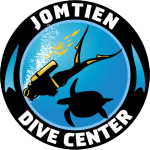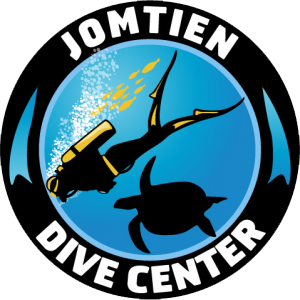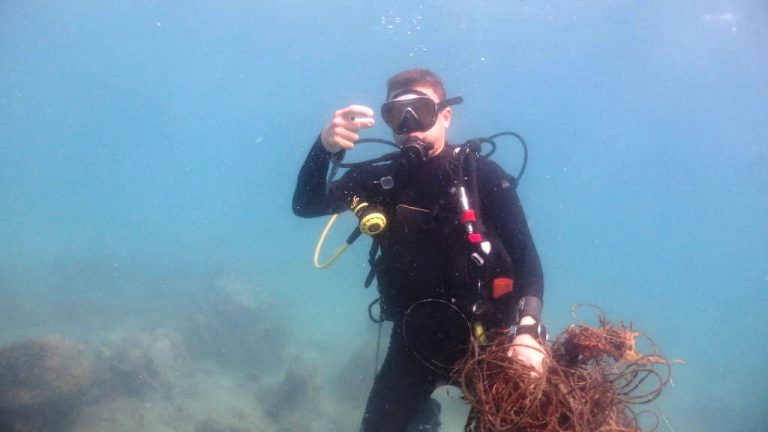
Together with SCUBA divers from the UK and Russia another Dive Against Debris was done at Jomtien Dive Center. PADI Dive Instructor and marine conservation expert Rob Fewster guided the underwater clean-up.
This time they went to a dive site called Laem Farrang at the Samae San Islands. Laem Farrang on the South side of Samae San island. It is composed of a patchy reef flat and slope descending onto sand at about 9 meters, but on the West side, there is a wall with a fascinating diversity of invertebrate life, descending to 18 meters and more. Because it is a no-fishing zone, the diversity of vertebrate life, especially Parrotfish and Harlequin sweetlips, is far greater than in other local areas.
This is not a dive site they often, but now it was time to clean it up and remove a lot of abandoned fishing line and fishing nets / ghost nets.
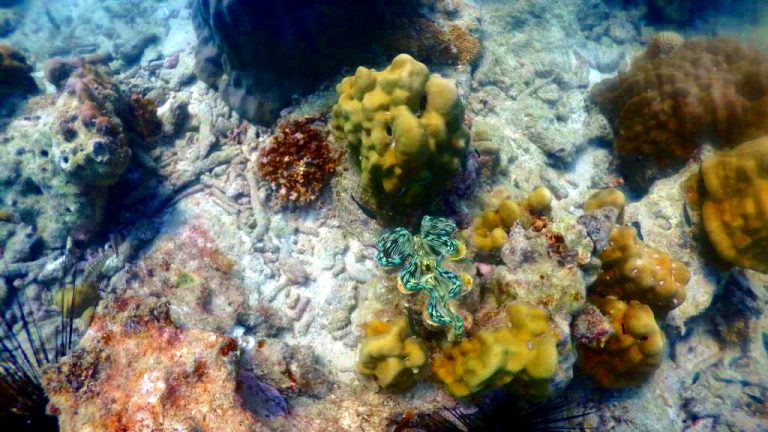
As you can see on the photo a lot of fishing lines and ghost nets were removed from the coral reef to prevent further damage to the corals and marine life to get trapped without any purpose.
Afterwards the reef looked natural again! Luckily they could remove all debris they could find during that dive. Well done guys!
Would you like to help us? Simply contact us and let us know when you are available for a clean-up dive. Certified divers only.
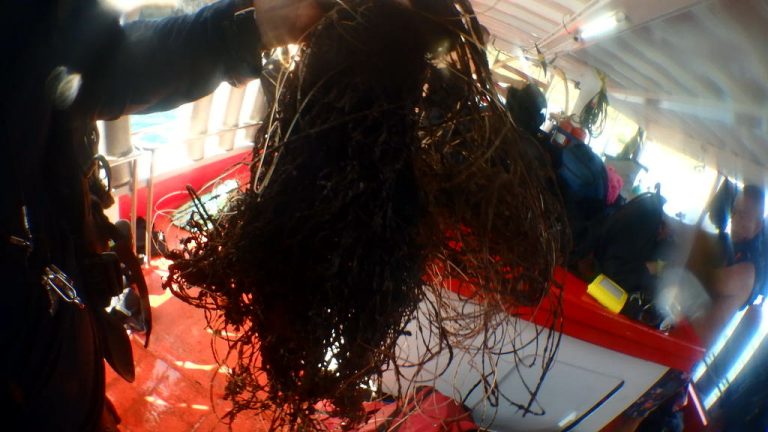
Removing debris from the ocean has to be done carefully. Crabs and other marine life species might be living in it and corals might have grown a skeleton around it.
Also you should be very careful about your own safety. There are various risks such as entanglement and being over-weighted / compensating for the extra weight in the wrong way or even trying to take too much weight to the surface without lifting bags and other aids. Therefore we also offer special Project AWARE and PADI courses up to PADI Eco Divemaster. Make sure to contact us for all possibilities.
‘Project AWARE’s flagship citizen-science program, Dive Against Debris, empowers scuba divers to remove marine debris from the ocean and report data on the types, quantities and locations of materials collected.’ (Project AWARE)
